The RO Battle – The New Audemars Piguet Royal Oak 15500 Compared to the “Jumbo” 15202
Same concept, very different execution...

The Royal Oak… A watch that needs no introduction anymore, a watch that’s so iconic that its popularity goes way beyond the confines of watch aficionados. However, if you look at Audemars Piguet’s catalogue, you’ll see that the collection is large (to say the least) and that it comprises dozens of versions. But today, we’ll focus on the two most important models, the cornerstones of the collection, the automatic watches. This includes the new 41mm Selfwinding Royal Oak 15500… But we can’t overlook the icon, the Royal Oak “Jumbo” Extra-Thin 15202. How do they compare? Follow the guide below.
The Royal Oak – the creation of a new category
1972 is probably Audemars Piguet‘s most important year in its recent history. A crucial turning point. For several decades, the brand specialized in crafting some of the most delicate and precious watches of Switzerland – especially perpetual calendars and repeaters. Still, as the quartz crisis gained momentum, Audemars Piguet took the decision to evolve, to change strategy, to counteract what would later be qualified as the worst crisis of the watch industry. The answer: a steel luxury sports watch designed by Gerald Genta, named the Royal Oak, and almost as expensive (if not more) than a classic gold watch.

The 1972 Royal Oak was a game-changer that created an entirely new market segment.
The watch was provocative, not only because of its price but mostly because of its unprecedented design. The basic but novel idea of Genta was to apply some concepts of jewellery into watchmaking. Until then, watches were basically designed as a sum of elements: a case, a strap, a movement and a dial that, all together, would create a timepiece. Genta came up with an object to be seen as a single, consistent design, where case, bracelet and dial were part of a whole. This would later be named the luxury sports watch category, with its definition created after the Royal Oak’s design.

The watch, known as reference 5402ST, was a mix of classic AP elements – ultra-thin movement, guilloché dial, high-end decoration and superior quality of the finishing – with otherwise unfamiliar specifications – use of steel, integration of a bracelet, decent water-resistance, time-and-date display and clear nautical inspiration. And if the 1972 design was provocative, it gave birth to an array of competitors to become a true watchmaking category in its own right… and the most popular of them all, indeed. Still, the Royal Oak 5402ST was often copied but rarely equalled. It was produced – under series A, B, C and D, all with slight evolutions on the dial/bracelet/movement – until the late 1970s.
The Royal Oak “Jumbo” Extra-Thin 15202
After the classic vintage “Jumbo” reference 5402ST, Audemars Piguet celebrated the 20th anniversary of this model with a limited “Jubilee” edition, the reference 14802, produced in 1,000 pieces only – including gold or platinum models and a salmon-dial version. Fast forward again to 2012 and the 40th anniversary of the model, when Audemars Piguet introduced the updated version of its classic Royal Oak “Jumbo” Extra-Thin, a watch known as the 15202ST – certainly one of the most sought-after contemporary watches and one that is still in production today.

The idea behind the Jumbo 15202ST is easy: it is the direct descendant of the original 1972, sharing approximately the same proportions – 39mm diameter and 8.1mm in height (slightly more than the 5402) – the same base movement, yet improved and no longer produced by JLC but internally by Audemars, the same time-and-date display without seconds and approximately the same “petite tapisserie” dial – even though in our photos of a 5402 vs a 15202, you can see a difference in colour and execution. Still, the 15202 is the closest to the 1972 model you can get today.
As such, this Royal Oak “Jumbo” Extra-Thin 15202ST is regarded as the benchmark for any other Royal Oak model – and for any luxury sports watch that is introduced.
A new segment, the Selfwinding watches – 15300 & 15400
As of 2005, Audemars Piguet decided it was time to introduce another watch in the collection, the 2000s version of the Royal Oak, a more contemporary, more masculine, more rugged watch and a version more in line with market expectations. This new sub-collection, the Selfwinding watches, was launched simultaneously with AP’s new in-house automatic movement, the Calibre 3120. The watch to house it was the reference 15300… Basically, the taste of the original Royal Oak, with a 39mm case, see-through caseback to see the modern automatic movement with seconds and date, a more robust bracelet, a slightly thicker case, and a lower price – becoming the entry-level candidate of the Royal Oak collection. While the 15202 already existed back then, the new 15300 became the “standard” watch in the collection, the one with higher production and sales numbers. An important product for Audemars Piguet.
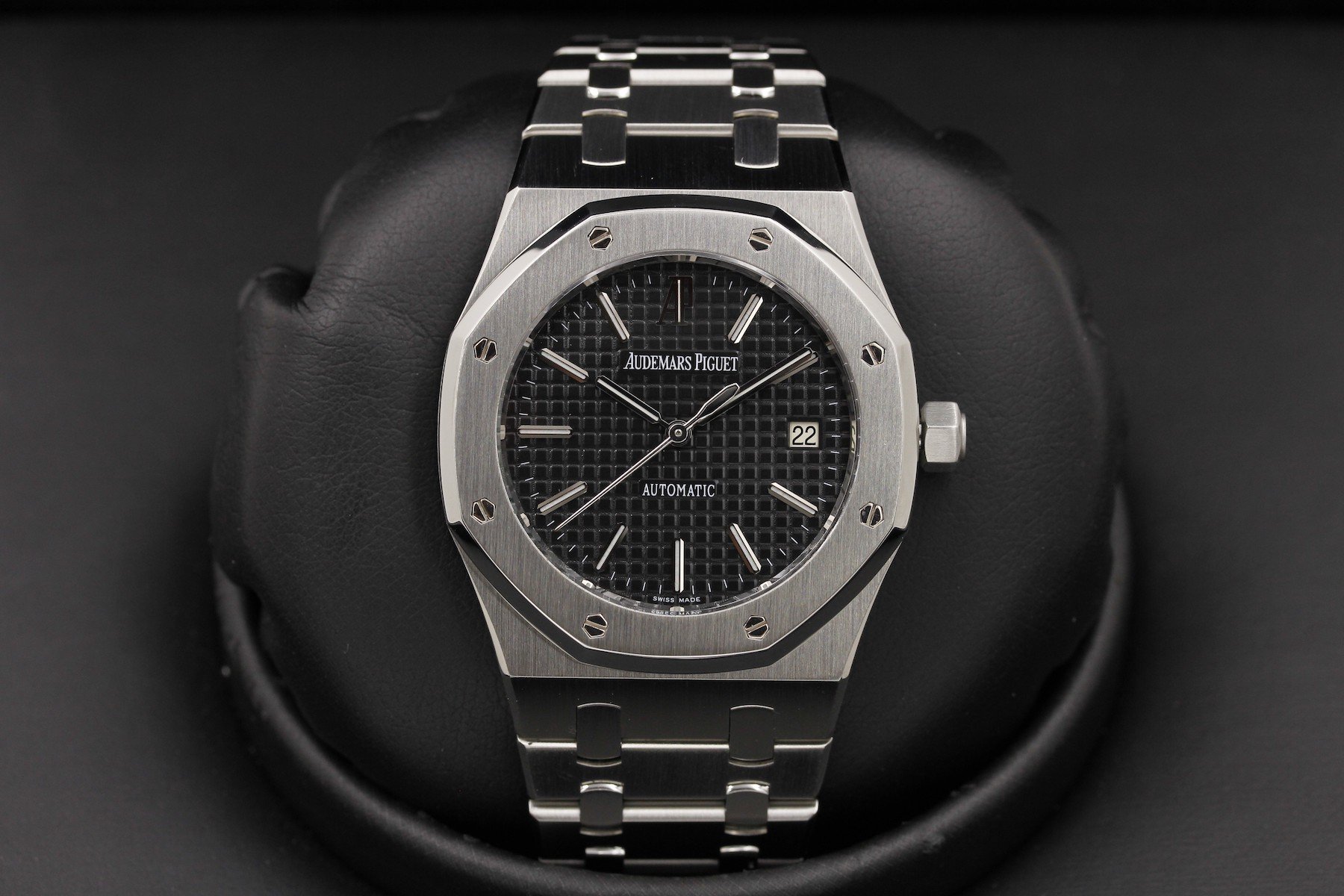
In 2012, Audemars Piguet updated the Royal Selfwinding with a larger 41mm case, which first differentiated it from the Jumbo, and then also ended up in a watch slightly more balanced than the 15300 – the diameter/height ratio was, in my opinion, better. This new reference 15400 still featured the in-house calibre 3120 but came with a larger case and updates all over. These included a new dial done internally on turning machines, new fonts and a logo placed below the marker at 12 o’clock.

This reference 15400 was produced until early 2019 and has now been replaced by a new, drastically updated Royal Oak Selfwinding 41mm, the reference 15500. The latter features multiple evolutions, most of them resulting from the new and larger movement – calibre 4302, introduced first in the CODE 11.59 collection. Being fairly larger than the previous calibre 3120, the result is a larger dial opening, a different position of the date, but also design updates on the dial and the case.
The New Royal Oak 15500 Compared to the “Jumbo” 15202
So here we are now, with that same question over again… What if you want an Audemars Piguet Royal Oak automatic, without additional complications – except a date – and the classic look of the collection (of course, we are ignoring the issue of availability in the equation here, as that’s another debate)? Well, you have two options. One is the classic, the Royal Oak “Jumbo” Extra-Thin 15202ST (which only exists with a blue dial now, at least for the steel model). The second option is the brand new, more modern and slightly more robust Royal Oak Selfwinding 41mm 15500ST. How do they compare? Read below.
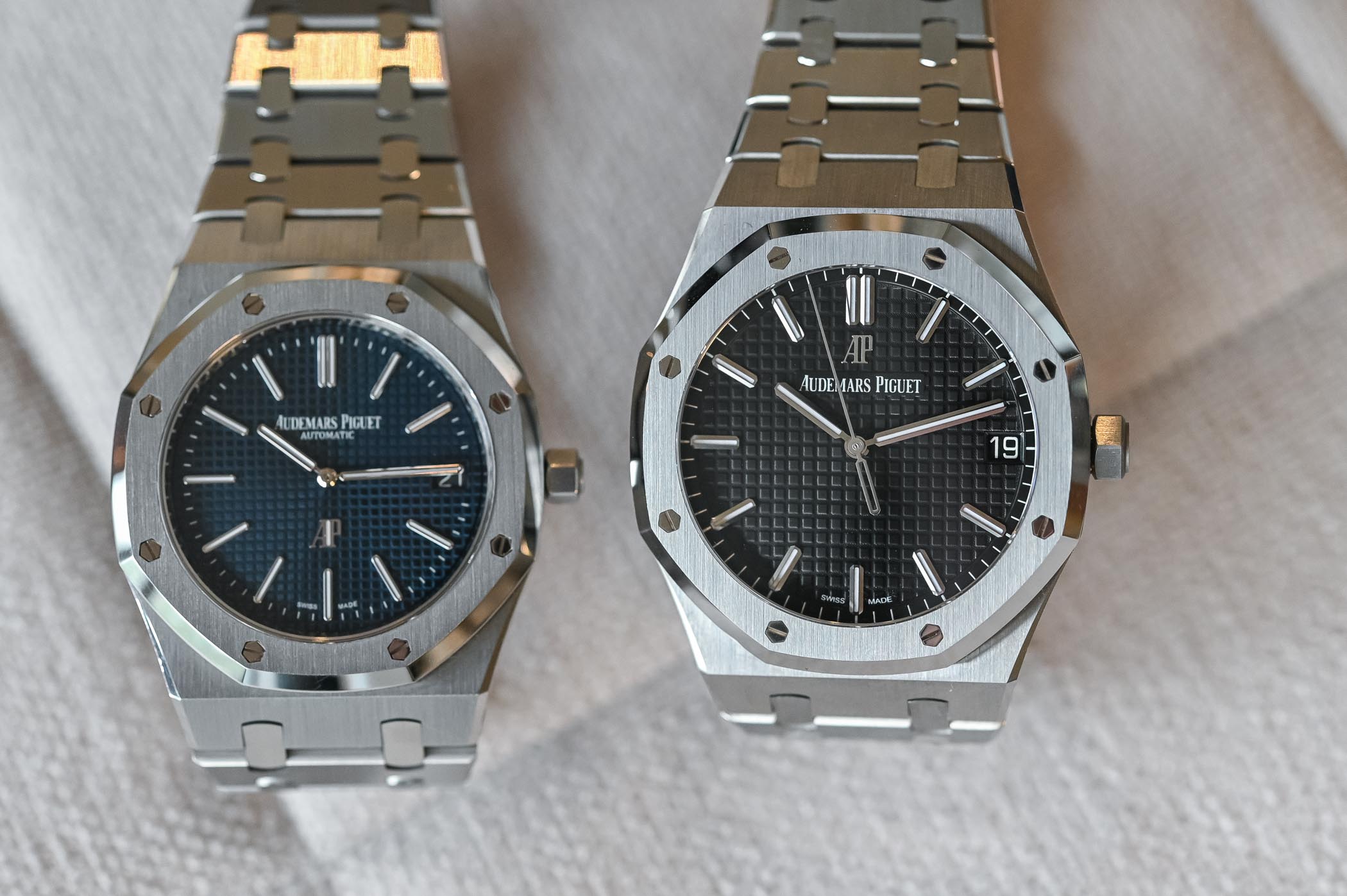
Case and bracelet – Same look, different proportions
Let’s start with the most important topic since few watches put the case and the bracelet on such a high level as the Royal Oak. The basic concept of this watch was to be a uniform piece to be worn on the wrist that tells the time. As such, comparing first cases and bracelets makes a lot of sense.
What’s closer to a Royal Oak than another Royal Oak…? Well, it’s not that simple.
The main difference between these two watches comes from proportions. On one side, we have the so-called Extra-Thin model, with its relatively restrained 39mm diameter and its 8.1mm height. By all means, the Jumbo isn’t a small watch and wears larger than its diameter would suggest. Still, by modern standards and due to its sleek profile, it is a relatively compact watch.
The Royal Oak Selfwinding 15500 is, in terms of overall design, very close to the original concept. The shape of the case is identical, so is the octagonal bezel with hexagonal screws and the integrated bracelet with its chain-like design. The difference is, however, to be noticed on the dimensions, as this 15500 is not only larger at 41mm in diameter but also slightly thicker at 10.4mm. The difference in height is distributed all over the watch, with some extra thickness on the bezel, the middle case and the caseback. Still, 10mm is not thick per se. On the wrist, due to the larger diameter, the ratio is somehow respected and feels balanced.
Still, both watches have to be compared and the 15500 feels like a classic Royal Oak on testosterone. All the parts, from the case to the crown, the bezel, the bracelet and the buckle, have been increased in size and height. While this results in a different feeling on the wrist – heavier and more robust – the proportions are kept and the design of the Royal Oak is respected. No changes regarding water-resistance, as both watches are rated at 50 metres – more than enough considering the natural habitat of a Royal Oak.
In terms of execution and finishing, there are simply no noticeable differences. Both watches are extremely precise in their execution, with shiny polished bevels, highly pronounced brushed surfaces and the same combination of these two textures all over the watches. If a difference exists, it would really require to be observed under a loupe but isn’t visible to the naked eye.
Dial – “Petite tapisserie” vs. “grande tapisserie”
Together with the difference in height, the dials are certainly what set these watches apart visually. At first glance, both watches could appear to be identical. A trained eye will, however, immediately spot the difference in execution between these two distinct “tapisserie” pattern.
The Jumbo Extra-Thin 15202ST, as the direct descendant of the original 1972 model, remains fairly close in terms of dial pattern, with the so-called “petite tapisserie” (French for small tapestry) guilloché textured plate. Executed by turning machines (a machine-controlled guilloché, not the Breguet kind of guilloché done by hand), the “petite tapisserie” is the finest pattern available at AP, with a succession of tiny raised squares. No need to say, a comparison between a 1970s watch and a modern model will tell you a lot on how manufacturing has evolved… The new dials are neat, precisely executed and extremely detailed. The old ones, as pleasing as they are, have a much softer texture. Tolerances are clearly not the same nowadays.
The Royal Oak Jumbo 15202ST used to be available in white, anthracite/black and dark blue. The latter being the most successful, and production volumes being low for this model, Audemars Piguet has decided to only offer this version now – in addition to precious or more exotic materials. The 15202ST sticks to the classic time-and-date display without seconds hand, to a printed logo at 12 o’clock (not in a cartouche but directly on the square pattern) and to the applied AP logo at 6 o’clock, just like the 5402ST A- and B-series. Hands and applied indexes are white gold and have the classic Royal Oak design, understand batons with rounded edges. All are filled with luminous material.
Moving to the new Royal Oak Selfwinding 15500, you’ll see that it is quite a different watch. Cleaner, more modern, sharper, more on the sporty side than the 15202ST. What was true for the case and bracelet is also visible on the dial. First of all, the 15500 features a different pattern, named “grande tapisserie”, with larger squares. While slightly easier to manufacture, the execution remains fairly impressive and extremely precise – in fact, much neater than what was found on its predecessor, the 15400. As for the pattern itself, size apart, it’s AP standards all the way. However, there are some major evolutions concerning the dial of this new Selfwinding model, most of them implied by the new movement.
First of all, the new movement is 6mm larger than the older 3120 and the date window has moved to the periphery of the dial. Second, there’s now a smooth minute track on the periphery of the dial. Finally, Audemars Piguet has decided to clean the watch as much as possible and removed the “automatic” mention. While I do understand this point, the result is actually a dial that feels a bit empty, since the AP logo and Audemars Piguet name are both located at 12 o’clock. After all, the “automatic” mention wasn’t bad. Note here that the Audemars Piguet name is printed in a smooth cartouche.
Finally, a closer inspection will reveal some design differences on the hands and indexes. As with the 15300 and 15400, the white gold hands/indexes of the Selfwinding model are larger, bolder and faceted. And of course, the 15500 features a seconds hand, which animates the dial. Note that the 15500ST – the steel model – is available in 3 different editions: the present black model, the classic Royal Oak blue and finally, a slate grey version.
In conclusion here, while the new Royal Oak Selfwinding 15500 shows an impressive level of execution, we can’t deny that the Jumbo version is simply superior. More refined, more elegant…
On the wrist
While the old 5402ST is somehow a delicate and brittle watch, the kind of watch that you don’t want to use as daily beater, the modern 15202ST, even though it has almost the same dimensions, is a modern watch. Tight, solid, slightly heavier too, you can actually use it on a daily basis without even thinking about it. Now, as I already said, the Royal Oak Jumbo might only be 39mm in diameter, but it isn’t a small watch due to its shaped case. Still, with its integrated lugs and bracelet, it is comfortable, well balanced and can be worn even by men with smaller wrists – or by women too, if you like the oversize look…
With the new 15500, the feeling is of having the same watch with extra material all around. Everything has grown slightly, whether it is the diameter, the height, the thickness of the bracelet or the lug-to-lug dimension. Visually, the positive point is that the balance of the design has been kept – I think the decision to change from 39mm to 41mm with the 15400 was wise since these extra 2 millimetres result in a better diameter/height ratio. On a standard 18cm wrist, the 15500 is a masculine watch for sure but it doesn’t feel oversized either. And since the angle of the lugs is more pronounced than on the 15202, the case feels rather compact. The real difference is in terms of weight, this 15500 being heavier – and even more with a gold case.
Movements – Calibre 2121 and Calibre 4302
The difference in movements between the 15202ST and the 15500ST is responsible for most of the disparities between these two watches. On one side, we have the Jumbo Extra-Thin, with its fairly old calibre 2121 (the original design is over 50 years old), which is not far away from the original movement found in the 1972 watches. Still, thanks to multiple improvements and an in-house manufacturing process, it is still seen as one of the best ultra-thin automatic movements on the market. Measuring only 3.05mm in height, it features an oscillating weight with an annular ring running on four jewels, a suspended barrel and a fairly unusual frequency of 2.75Hz (19,800vph). The movement is nicely decorated, with polished bevels, satin-brushed edges, perlage on the main plate and a 21k gold rotor with high-end decoration.
The 15500 features Audemars Piguet’s newly introduced self-winding calibre 4302, a movement that will slowly replace the older 3120 in most watches without complications. This slightly thicker movement is large (32mm in diameter), thus adapted to modernly sized watches, and shows multiple mechanical improvements over the calibre 3120. The power reserve is now 70 hours (vs. 60 hours) and the frequency has been increased to 4Hz (vs. 3Hz). It features a traversal balance bridge supporting a free-sprung balance wheel.
As for the decoration, the 15500 also marks a step forward compared to previous iterations, the calibre 4302 reveals some hand-finished parts, including nice polished bevels and a 22k gold rotors with multiple hand-executed sharp angles. Plus, the movement now feels appropriately sized…
Certainly, between these two movements, some dramatic differences exist. As an ultra-thin movement, the calibre 2121 is slightly more complex to assemble. Also, since this movement is produced in much smaller numbers, it also requires more human interventions. On the other side, the goal of the Calibre 4302 is different. It is a modern movement, meant to be precise, robust and produced in larger quantities. It’s the backbone of AP’s manufacture. Still, it remains quite impressive in its specs and decoration.
Once again, the difference in movements reflects the difference in strategy and placement between these two watches.
Conclusion
One topic we haven’t considered yet is price. The Royal Oak “Jumbo” Extra-Thin (reference 15202ST.OO.1240ST.01) is priced at CHF 24,800. The Royal Oak Selfwinding 41mm (reference 15500ST.OO.1220ST.02) retails for CHF 19,300. In all fairness, the difference in price is relatively easy to understand, knowing that the dial of the 15202ST is more delicate, that its movement is slightly more demanding in terms of manufacturing and, mainly, that production numbers of the 15202 are much, much smaller. Also, let’s once again remove the issue of availability from the equation.

So what can we conclude about the new 15500 compared to the classic 15202? Well, in short, these are two different watches targeting different groups. As a product, the 15500 is impressive and pays tribute to the quality you expect from an Audemars Piguet. Case, dial, movement, bracelet… Everything is perfectly executed, adjusted, finished. It is a high-end sports watch with a modern and powerful movement, no doubt about it.
I think the Selfwinding 15500 and the Jumbo 15202 are simply not meant for the same audience. For someone with relatively modest knowledge and interest in watchmaking, the 15500 will do an excellent job. Not only does it have all the elements you expect from a Royal Oak, but it also answers the demands of modern customers who want to wear their watches extensively, with a more masculine size.
On the other hand, the 15202ST should remain a connoisseur’s watch, a watch meant for seasoned collectors who know and care about history and faithfulness. I believe that the 15202ST is a watch that has to be earned… A sort of well-kept treasure, a privilege that is hard to obtain, which makes it even more desirable.
My personal preference goes, without doubt, to the Royal Oak “Jumbo” Extra-Thin 15202ST – and I guess it will be the same for most of our readers, for the simple reason that they know what it truly represents. Now, don’t get me wrong, the new Royal Oak Selfwinding 15500 is a very serious package. However, most watch customers are not watch-nerds and Audemars Piguet has the right product with the 15500 for them.
More details at www.audemarspiguet.com.

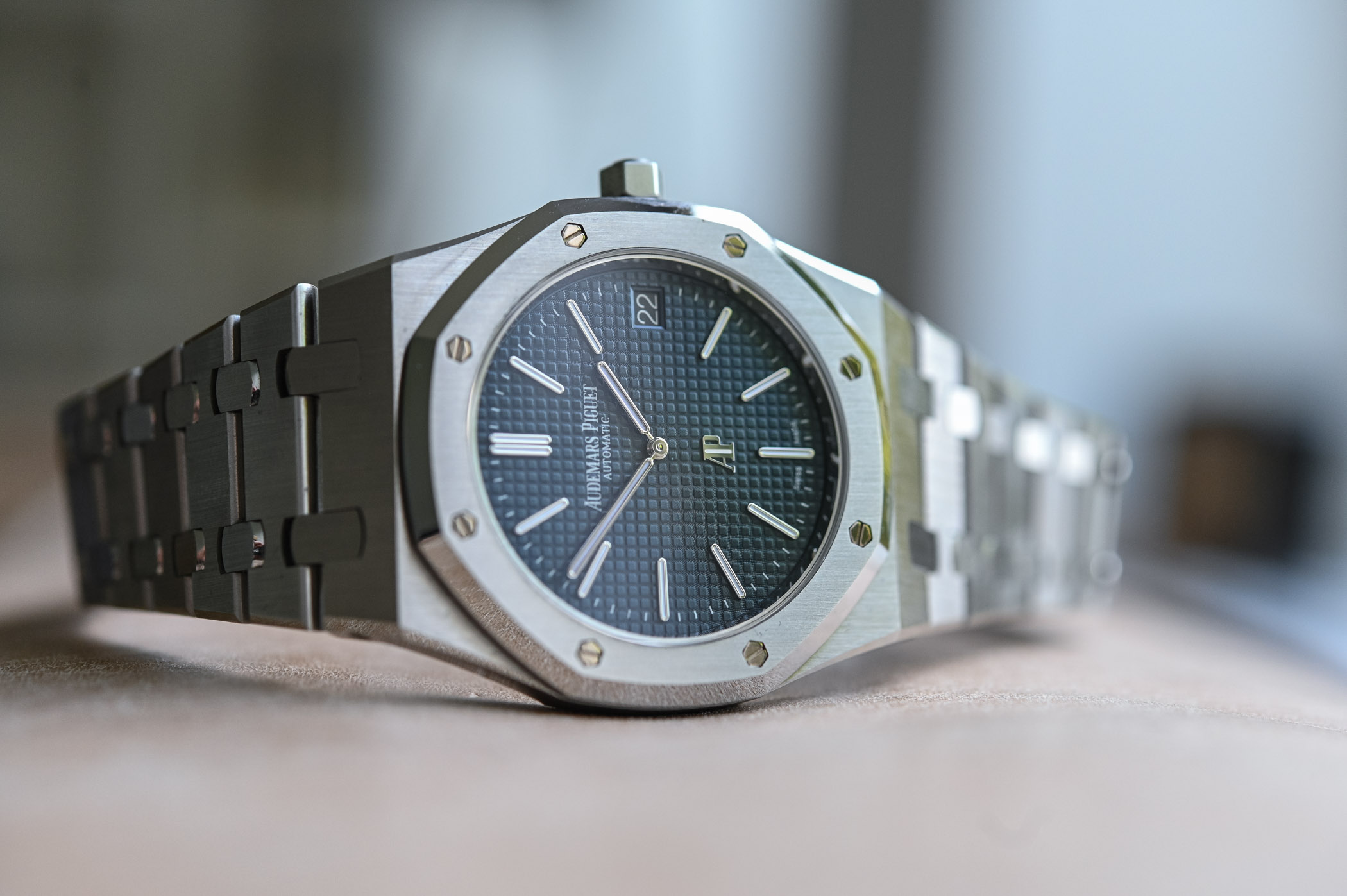

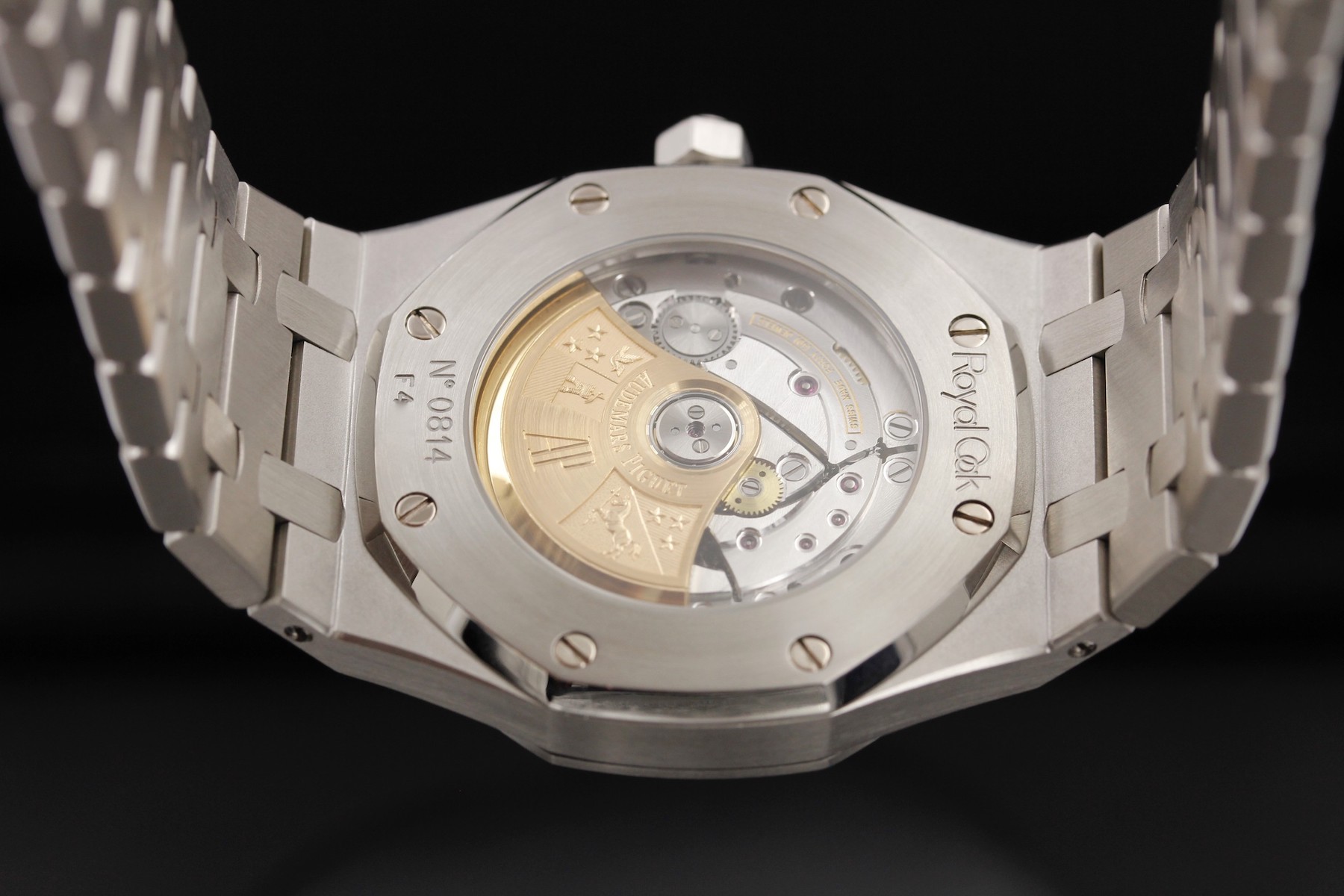

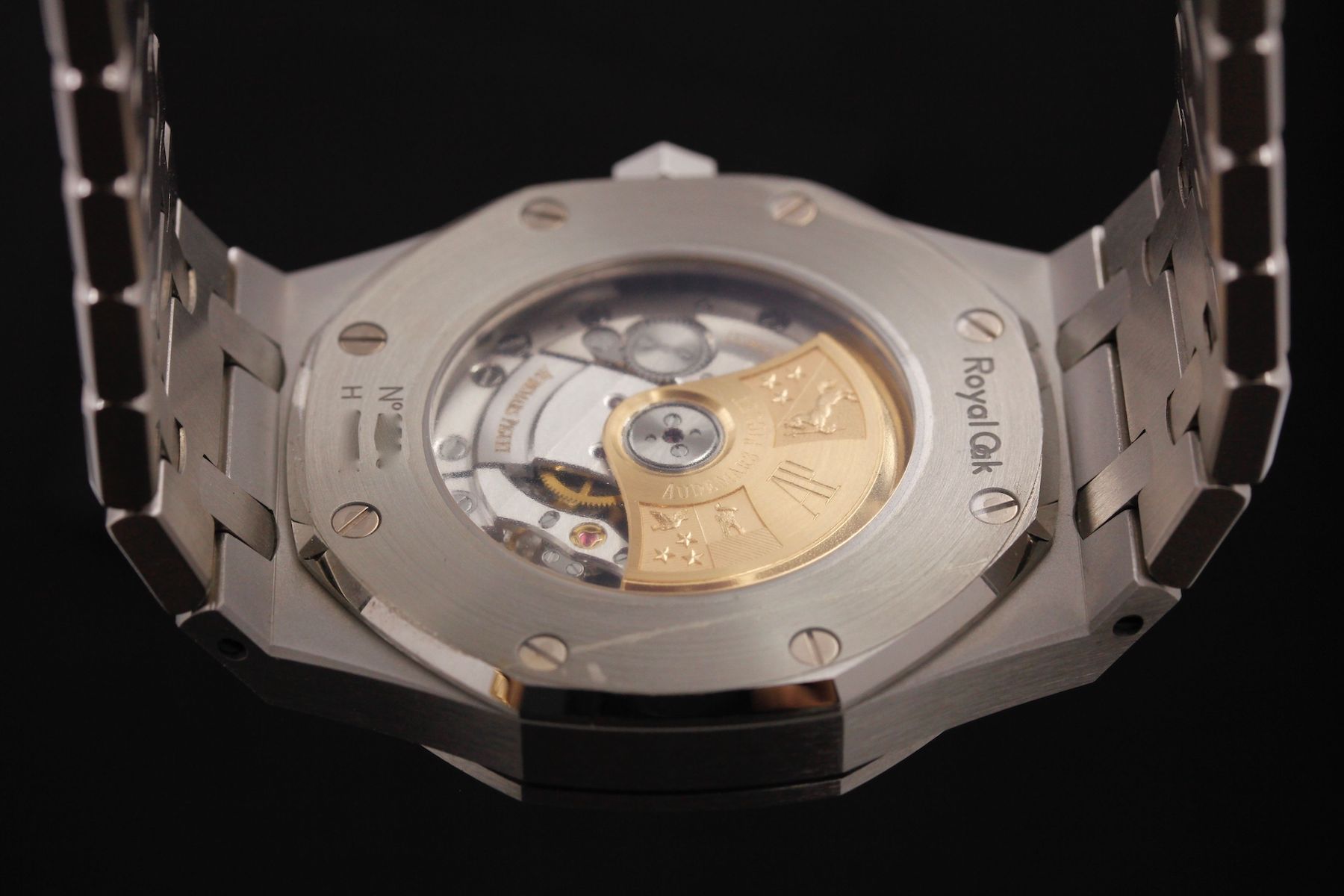



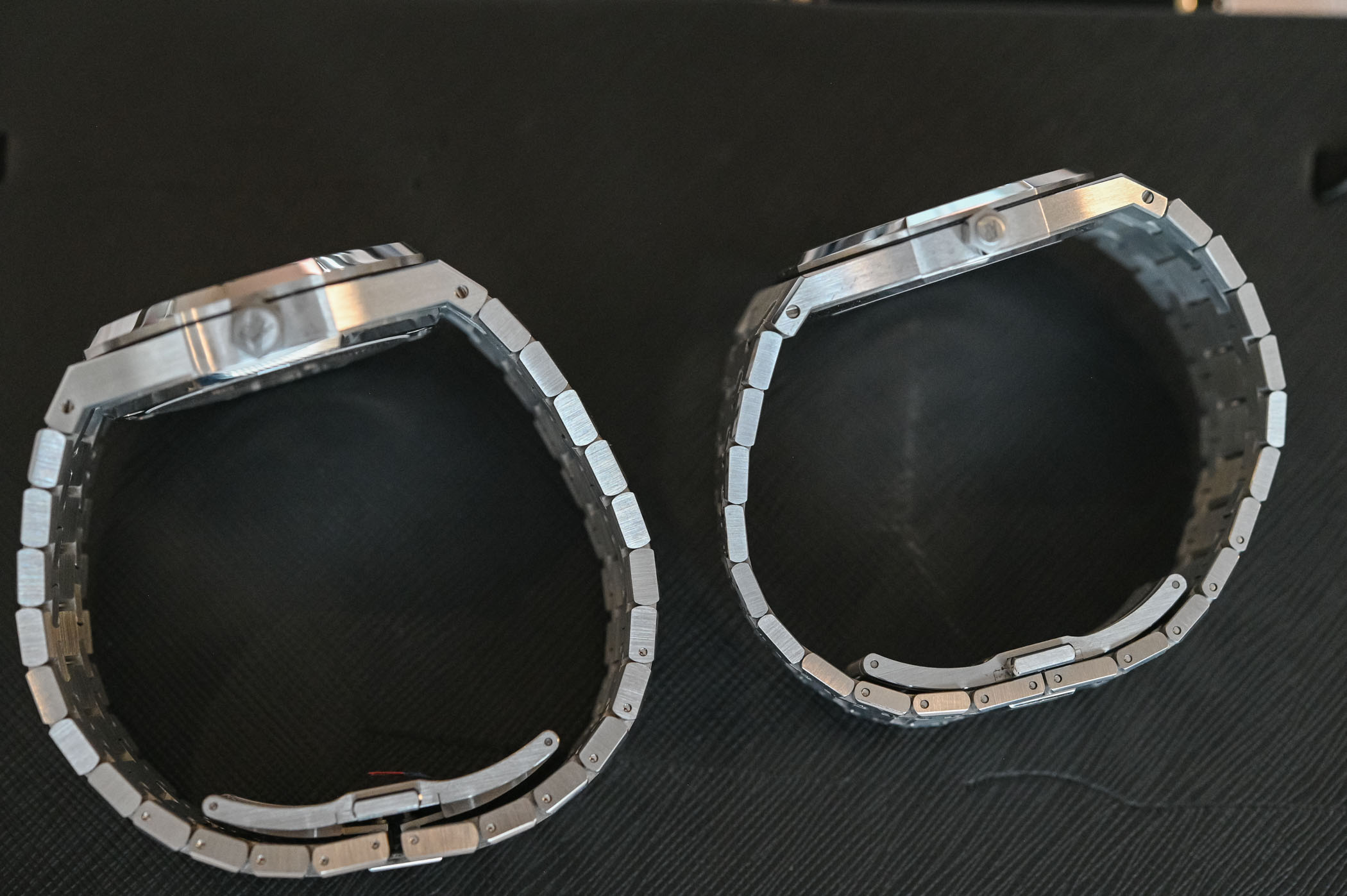

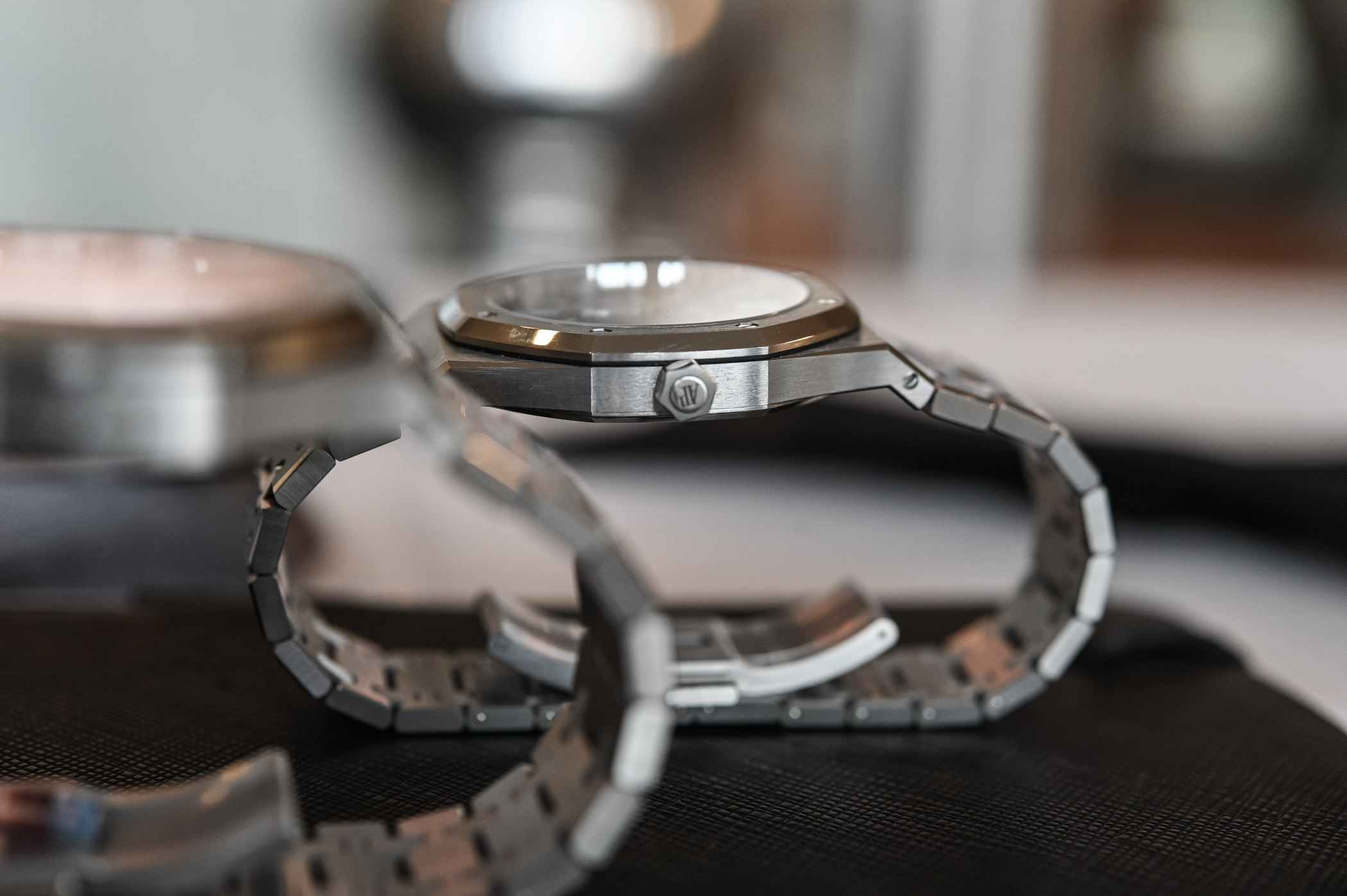



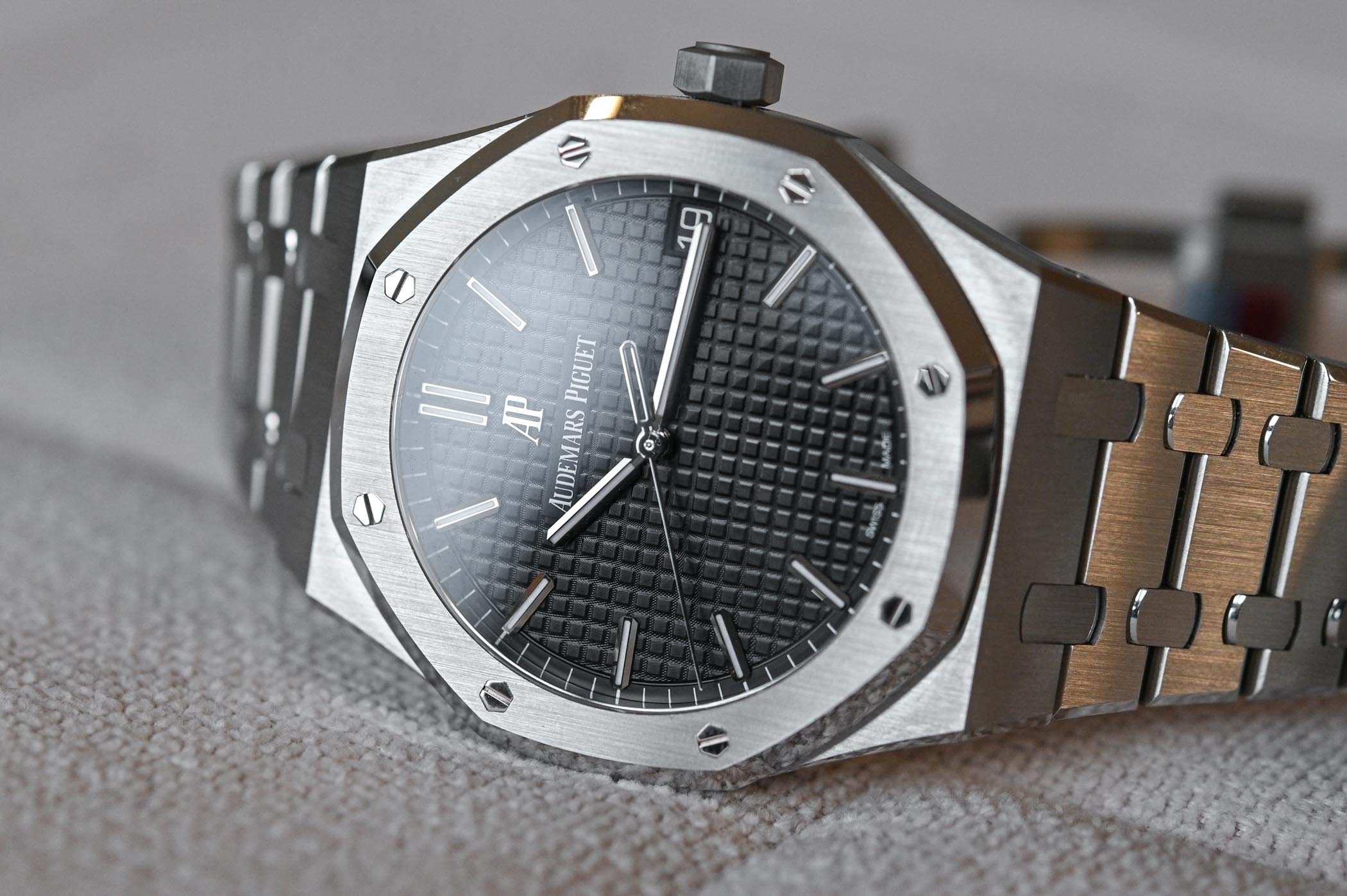
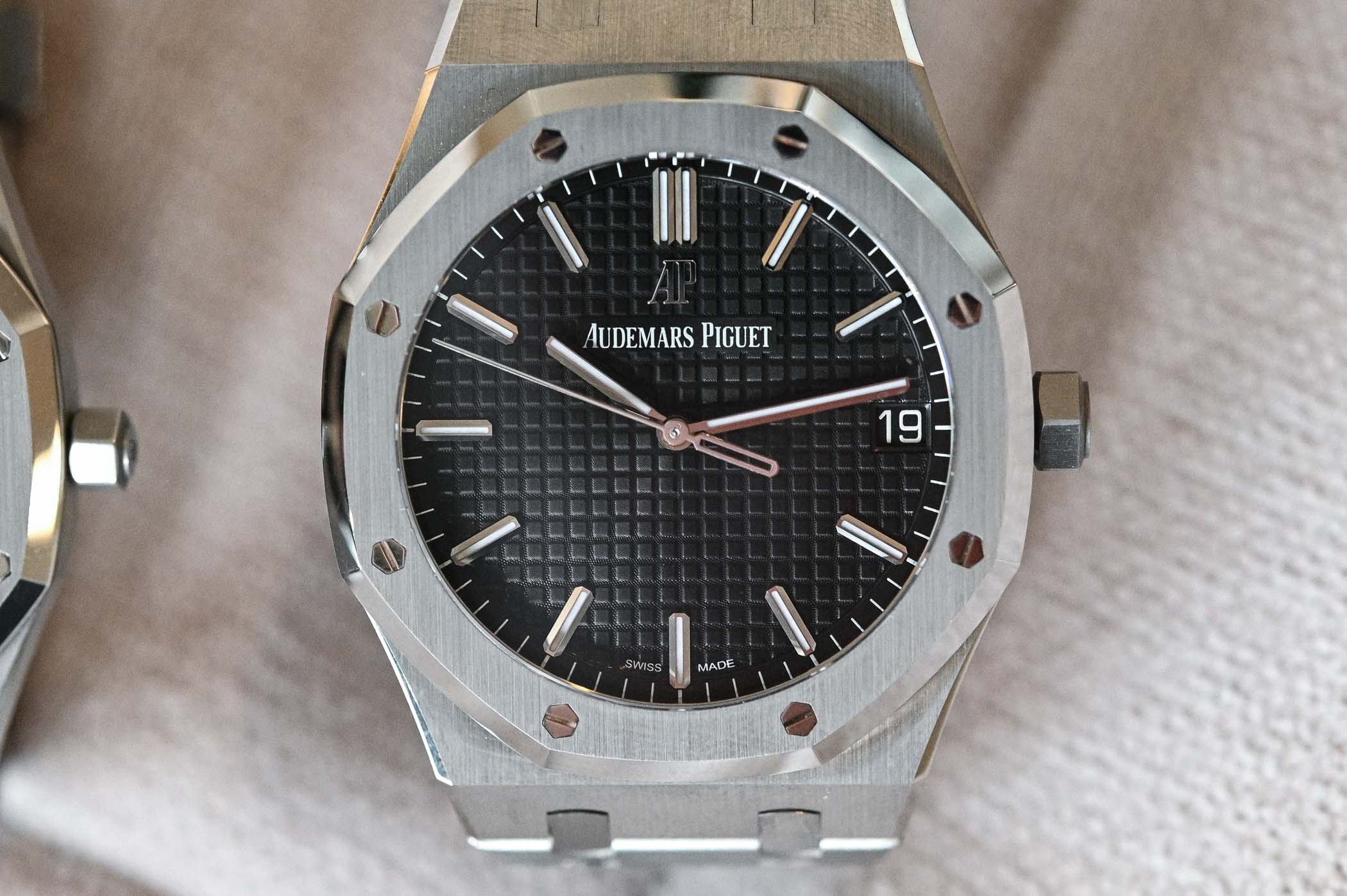

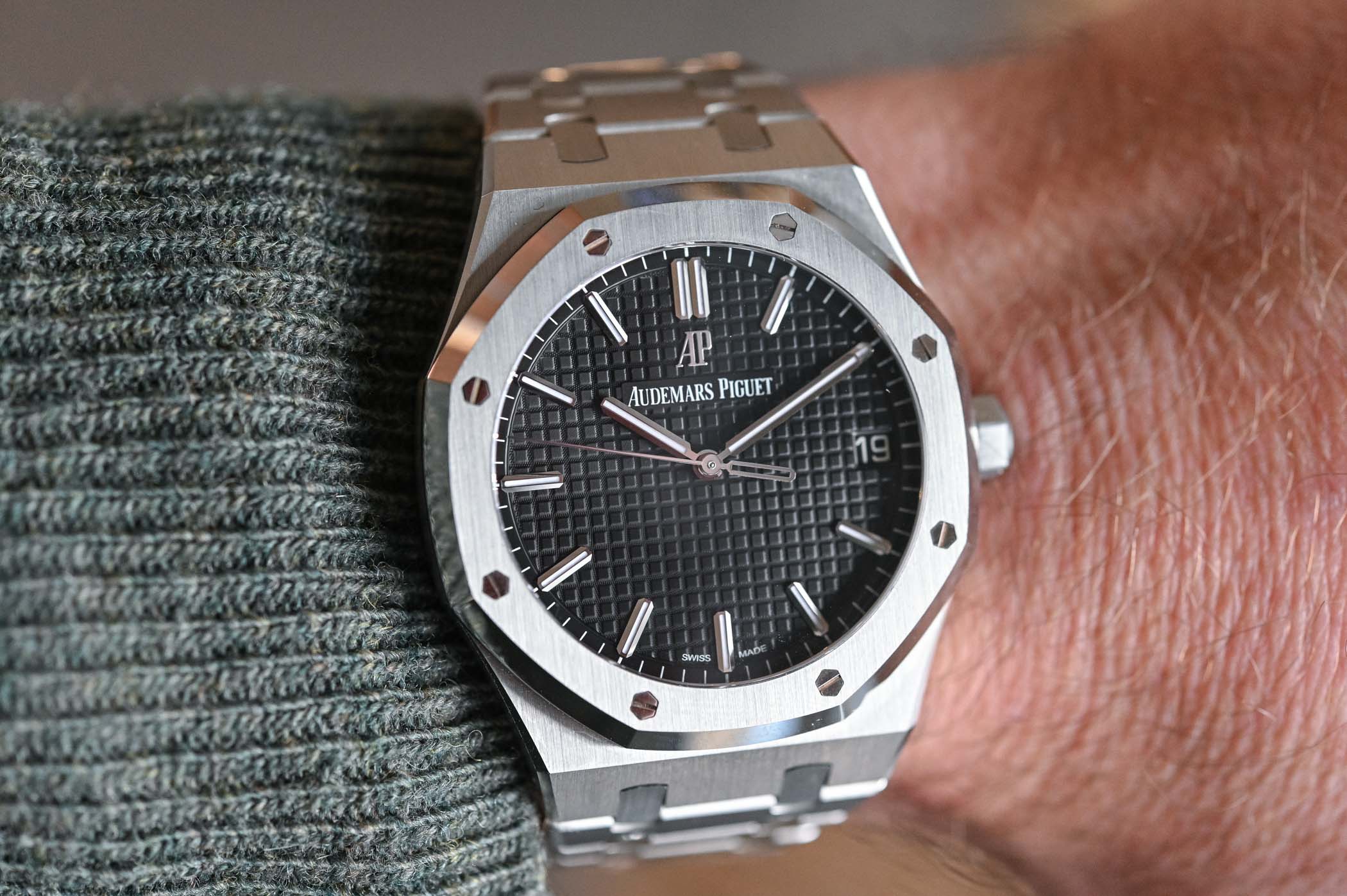
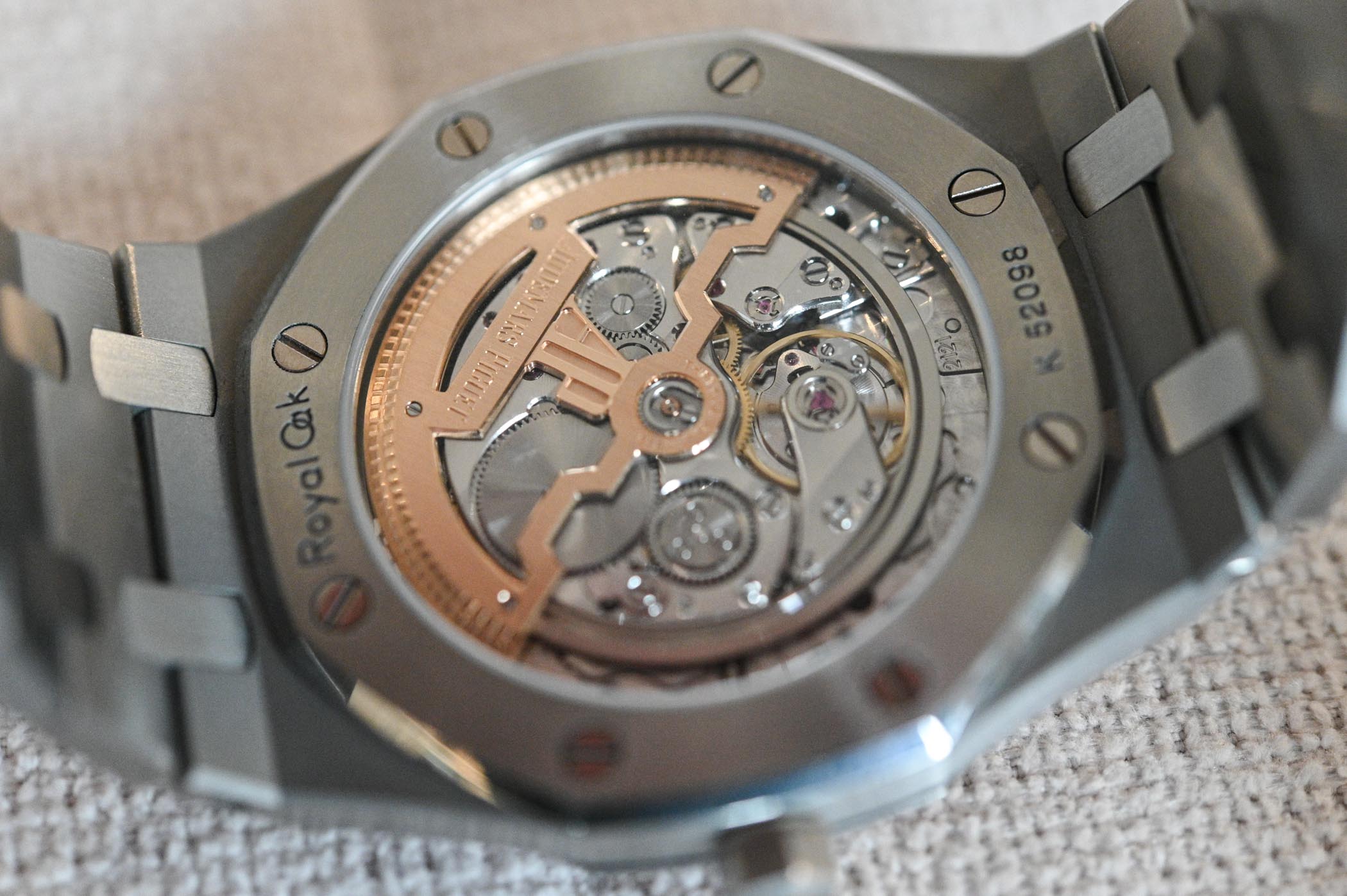
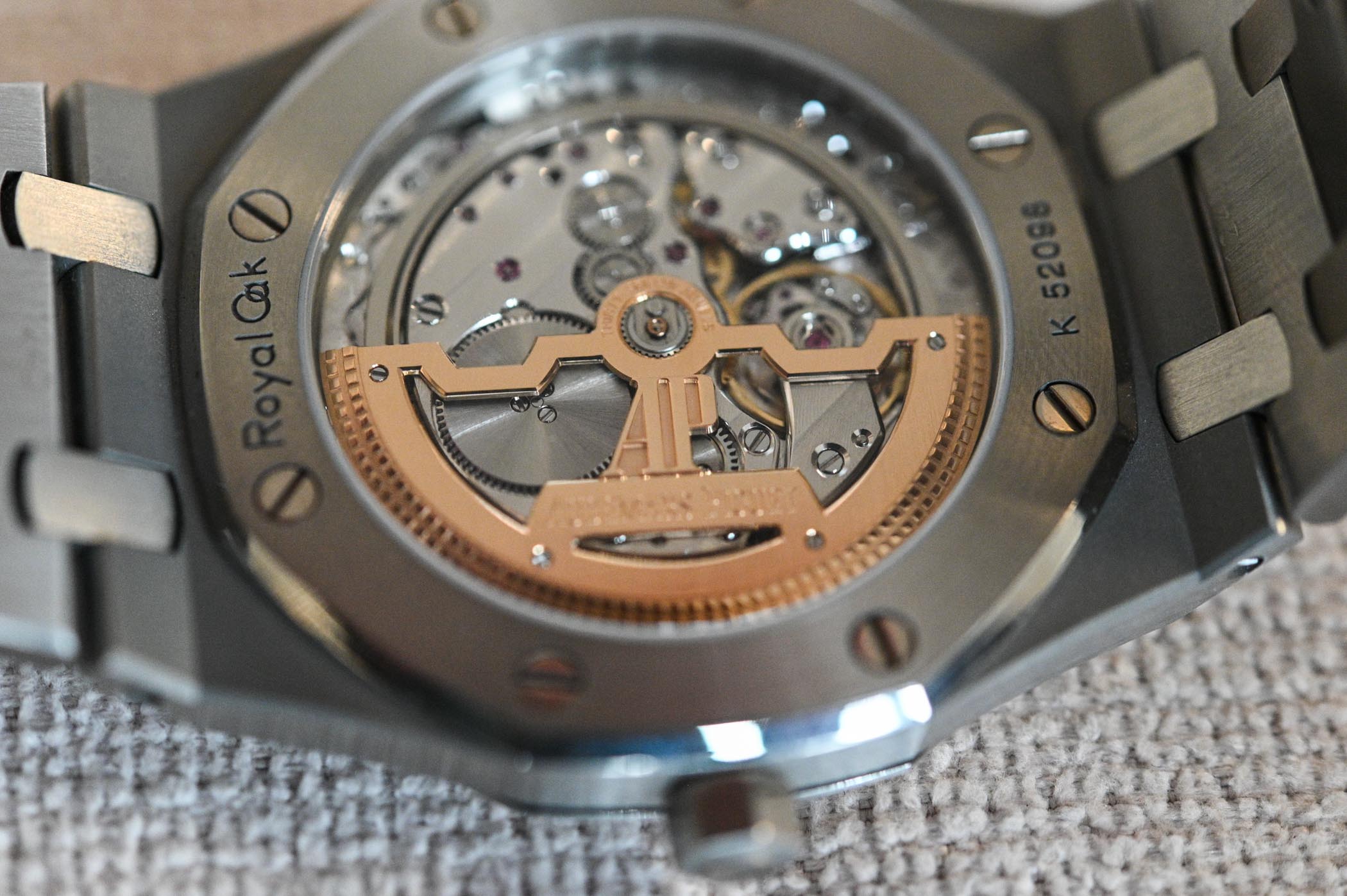
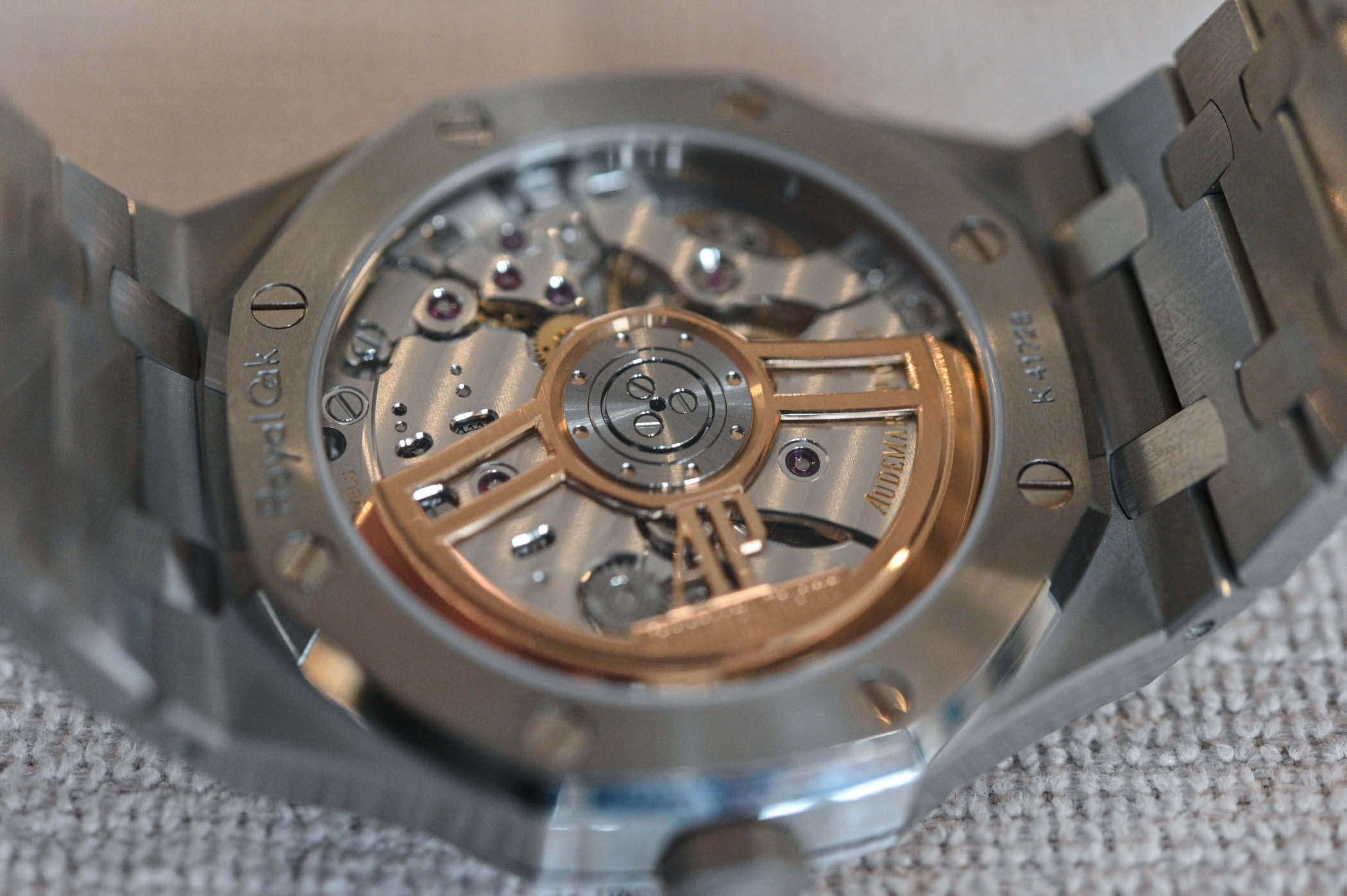
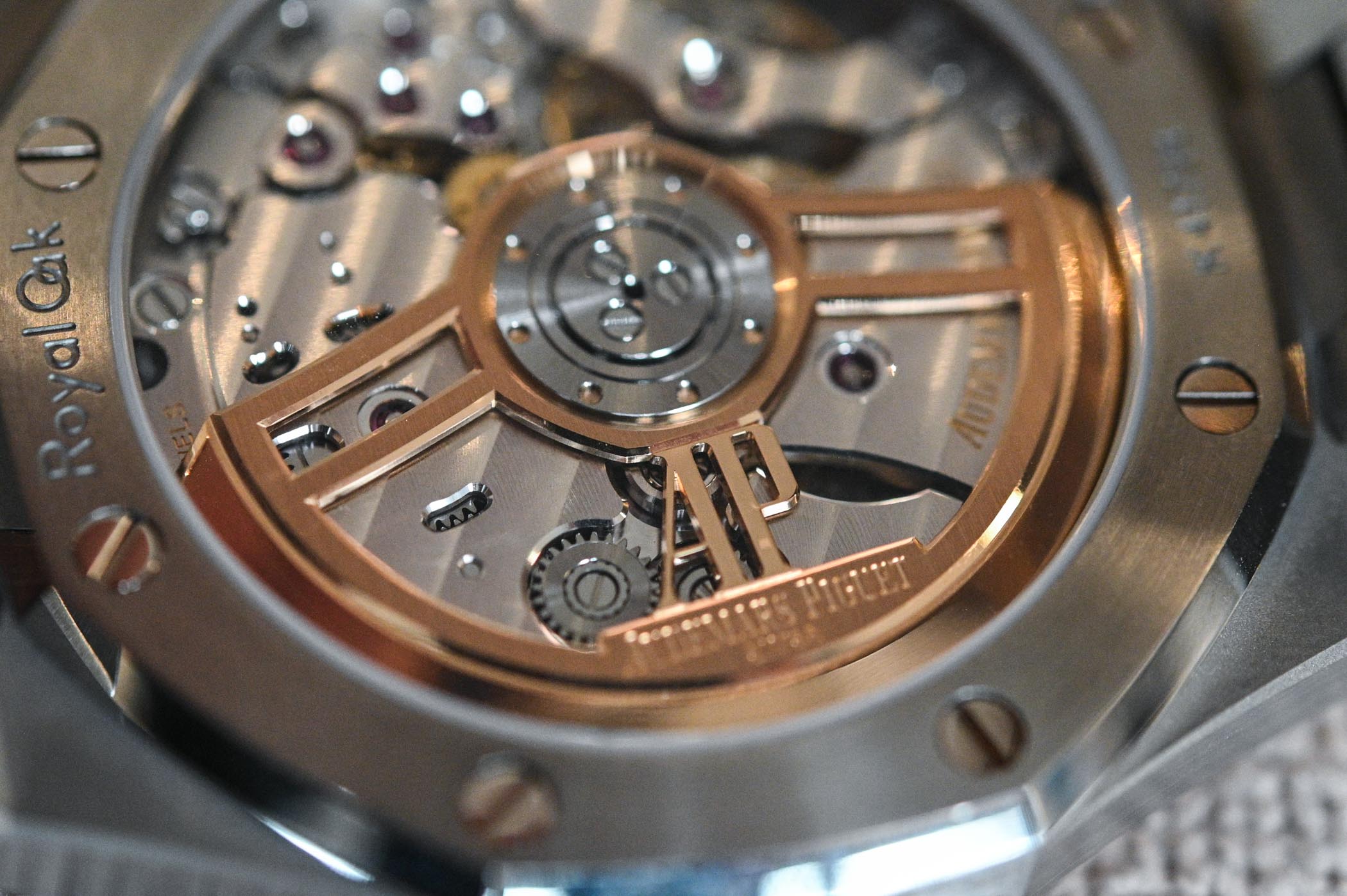
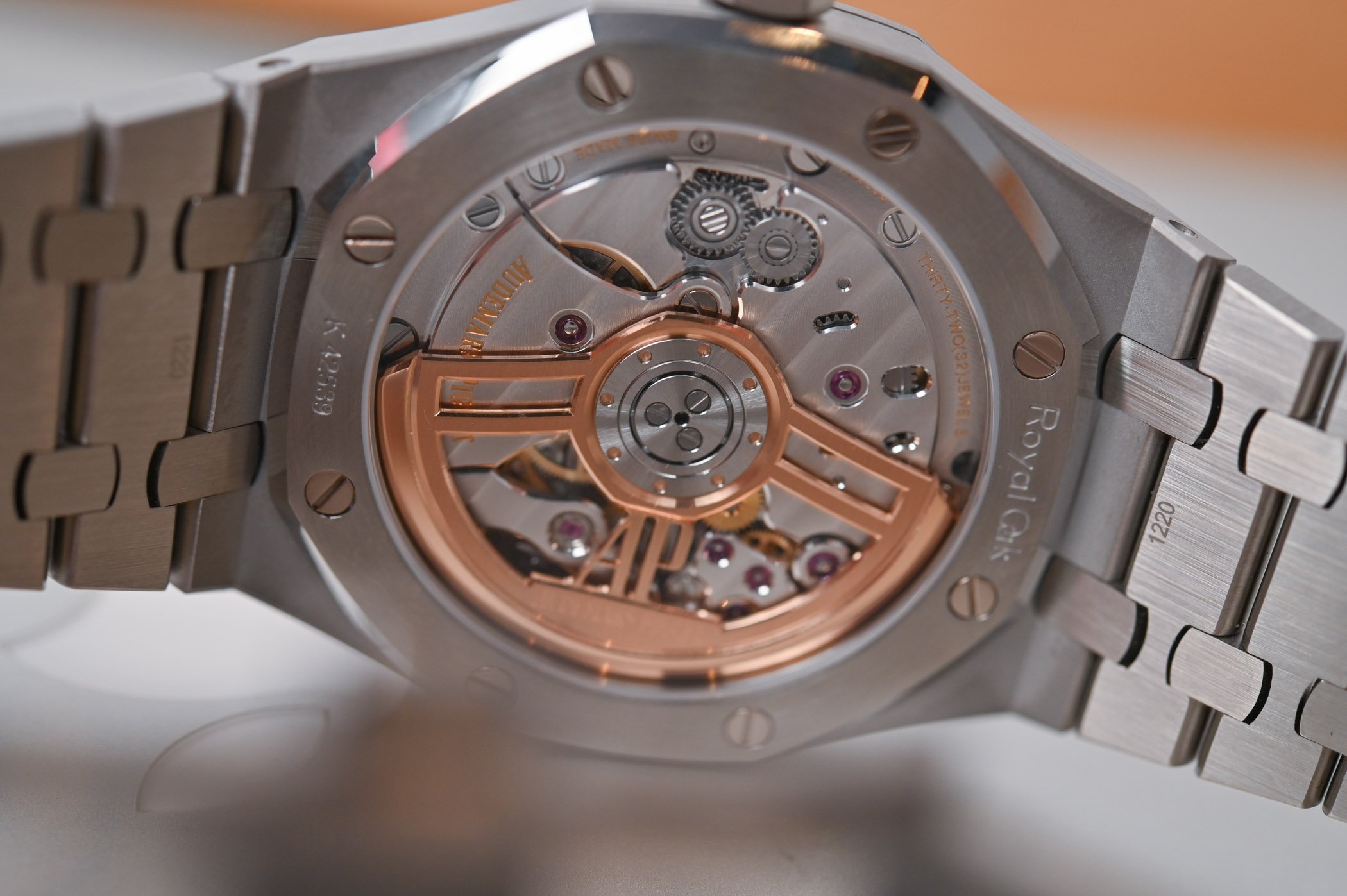





10 responses
This would have 50 comments on ablogtowatch or the ho
Heh.
I’ve still not completely warmed to the 15500. Must say the 15300 still looks great.
No contest for me, the 15202 won.
@RayH
Absolutely! even though in all honesty I prefer Monochrome by very far to ABTW which alternates good articles and others that can be considered sometimes literally trashy and gossipy. Hodinkee has an undeniable advantage of the nice (sometimes pedantic) style of some of the authors but all in all Monochrome is still my favorite because you can feel the modesty, knowledge and real passion of the authors with Brice being my favorite (maybe because our first language is French 🙂 ).
That said I really don’t understand why the number of comments is typically lower here. I’m gonna say something that might be politically incorrect but my thought is this is due to the nature of the readers of Monochrome who are in mind close to the spirit of this blog (real passion, no show off, respect for watches and watch lover and in general more maturity) while some other blogs attract a younger more drawn to social media audience.
Keep it up Monochrome.
@JD – first… WOW, thanks a lot. Really a nice comment. And I think you somehow pointed out the reality! And we’re quite happy to have knowledgeable readers, and we might have fewer comments than others, but usually comments that are well-thought.
I agree with Bryce’s summary. Years ago I would have chosen the 15300/15400 if I could have found one because it had more “modern” sizing. I have had my 15202 for about a year now and absolutely love it; took only about 9 months of waiting because I happened to answer the phone at the right time (a collector ahead of me on the waiting list declined purchase because he was getting a different AP). Ever time I put the watch on I feel like I am part of a secret and special gentlemen’s club. Perhaps the bracelet is my favorite part; the finish and beautiful draping on the wrist are amazing. Of course, the history of the watch is always a good story to tell to friends; when else can one talk about a British king hiding from the Skinheads in a hollowed out oak tree and battleships named “Royal Oak”.
As many readers probably know the tiny crown makes for difficult date/time setting especially if it hasn’t been worn for awhile. It is so annoying that the boutique employees have a special tool to attach to the crown to ease the process. I have asked for one of those. I suppose it is just one more common bond I have with other 15202 owners.
Lancelot you lucky man.
And I echo JD’s sentiment.
I’m with chia-Ming the 15202 wins for me
Based on past releases, when do you predict that the new 4302 calibre will be incorporated into the 37mm option (15550?)?
I just got the call back for the 15450 and now am wondering if I should wait for the 15550 to come out!
@Dave – considering that the 4302 is a large movement, our guess is that it can’t fit into the 37mm. On the 41mm version the date is already at the edge of the dial, so it seems impossible to have this movement in the 37mm case.